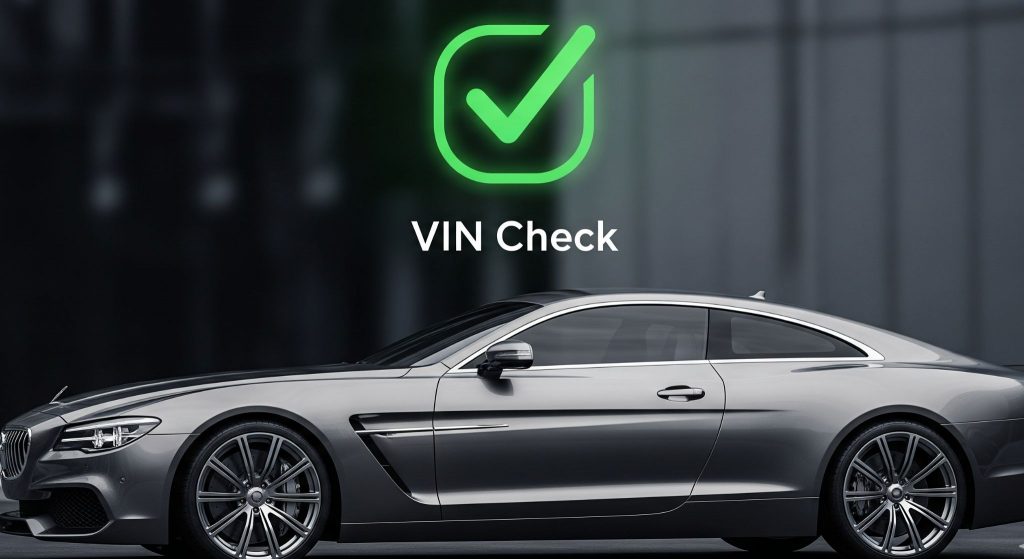What Does “No Title” Mean for a Car?
A vehicle title is more than a piece of paper — it’s the state’s official declaration of who owns the car. It documents every transfer, lien, or change of status in the car’s life.
When a car has no title, the chain of ownership is broken. That can happen for a few reasons:
- The title was lost, stolen, or destroyed.
- The car was abandoned or sold in an informal deal.
- The paperwork was never properly transferred after a sale.
Whatever the cause, the result is the same: without a title, you can’t register or insure the vehicle under standard DMV rules. For most buyers and sellers, that makes the car a dead end — unless you’re willing to navigate the extra steps.
Why VIN Checks Matter When There’s No Title
If the title is gone, the VIN (Vehicle Identification Number) becomes the anchor point for establishing identity. A VIN check confirms that the car in front of you is exactly what it claims to be — not stolen, not cloned, and not tampered with.
Montana requires VIN inspections before any no-title vehicle can move forward to registration or titling. Think of it as a safeguard: it protects the buyer, the seller, and the state from fraud while opening a pathway for the car’s next chapter.
At Ride Legal, we simplify this process with our VIN Check service — giving you expert handling and peace of mind that your car is cleared for the next step.

The Montana VIN Inspection Process
So how does it work? In Montana, a VIN inspection is a hands-on check performed by
- DMV staff
- Or authorized agents
They’ll record the VIN stamped on the vehicle, verify it against state and national databases, and submit a certificate back to the DMV. This process makes sure the car isn’t reported stolen and that the identifying numbers haven’t been altered.
Without this certificate, the DMV won’t move forward with a new title. With it, you’ve cleared the first big hurdle.
For more, see the Montana DMV’s official VIN inspection guide. Or, skip the DMV runaround and let Ride Legal handle it directly through our VIN Check service.
What If the Title Can’t Be Found? The Bonded Title Path
When the original title is gone for good, Montana offers a safety net: the bonded title.
Here’s how it plays out:
- Pass the VIN inspection — proving the car isn’t stolen or fraudulent.
- Apply for a bonded title through the DMV.
- Buy a surety bond equal to the car’s value. This acts as financial protection in case a previous owner surfaces with a valid claim.
- Provide a notarized bill of sale and any other ownership proof you can gather.
- Wait out the defined period. If no disputes arise, the bonded title automatically converts into a standard Montana title.
The Montana MVD guide to bonded titles breaks down the full requirements and steps. If you’d rather not tackle that maze alone, Ride Legal can streamline the paperwork and bonding process for you.
State-Assigned VINs: A Last Resort
Sometimes the problem isn’t just the missing title — it’s the missing VIN itself. If the VIN plate has been destroyed, rusted off, or removed, Montana law allows the DMV to issue a state-assigned VIN.
This involves an additional layer of documentation and inspection, but once complete, the state provides a new VIN that attaches to the car. With that in place, the vehicle can finally be titled and registered like any other.
if you’d rather not juggle forms and inspections yourself, Ride Legal is here to help.
Why This Matters: The Risks of Skipping the Process
It might be tempting to cut corners with a no-title car, but here’s what you’re risking if you skip the VIN check and bonded title process:
- Registration Denial: Without a title, the DMV won’t issue plates.
- Insurance Problems: Most insurers will not cover a car without valid ownership documents.
- Resale Headaches: Buyers are wary of no-title cars, and resale value plummets.
- Encumbered by a lien: If the car is later found to be stolen or encumbered by a lien, you could lose both the vehicle and your investment.
The VIN check isn’t just red tape — it’s protection, for you and for the system. Enthusiasts on forums like DelicaForum share first-hand experiences with the Montana VIN process, underlining why it’s worth doing right the first time.
If you’re ready to clear your no-title car and move toward ownership, start today with Ride Legal’s VIN Check service.



